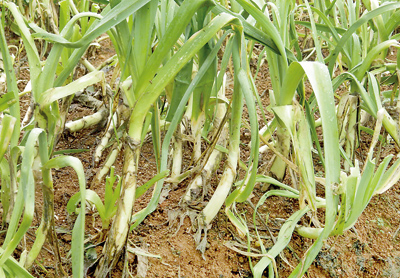Monsoon rains have clearly increased in intensity, experts said, as continuing bad weather damaged at least 132 houses and causing a death – and the government warned that the economy would be a victim of our changed weather patterns. The country experienced heavy flooding in 2011 and 2010. Prolonged drought affected 2012, and floods returned over the past few months of this year. The resulting damage has not only affected agriculture and livelihoods but also infrastructure.
Treasury Deputy Secretary Dr. Suren Batagoda said recent changes in weather patterns had caused billions in losses. “Newly done roads and bridges were damaged due to the unexpected and intense rainfall. The Treasury had to allocate Rs. 60 billion for flood control and flood damage in 2010 and 2011,” he said.
“In 2012, due to drought we could only produce 18 per cent of electricity through hydro-power. Using fuel to generate electricity is expensive, so this has become an additional burden to the economy,” Dr. Batagoda added.
The Deputy Secretary of Treasury made these revelations last week delivering the keynote address at the Symposium on Community-Based Adaptation to Climate Change, organised by the Global Environmental Facility’s Small Grants Programme (GEF/SGP) of UNDP with support from AusAid.
Other climatic experts addressing the symposium also stressed that frequent weather-related disasters and climate change could seriously set back development targets set for key sectors such as agriculture, fisheries and even services such as tourism.
Most infrastructure projects, including roads, drainage systems, railways, etc. have not been factored in weather change considerations, the National Climate Adaptation Strategy of Sri Lanka (NCASS) emphasised in a recent report: “While in some areas it may not matter, in others this is critical”.

Vegetable plantations have been badly affected in Nuwara Eliya
“Transport infrastructure in certain coastal areas could be under severe threat due to sea level rise. A systematic investment program to adapt infrastructure prone to weather change risks is not available and this will necessarily have to follow after a detailed study, but the investments involved could be substantial. However, incorporating these additional elements to face risks of weather change impacts is important as otherwise, the whole investment will go in the water,” the report points out.
The impact of weather changes on agriculture is evident in the hill country. Nuwara Eliya and its suburbs have been experiencing gloomy weather since April, with some areas receiving doubled rainfall. This has badly affected the tea yield, where some of the estates are recording losses in millions of rupees.
“The tea bushes in hill country have not received enough sunlight so they are not producing buds at the normal rate. Some estates that pluck buds once a week have had to wait more than two weeks and even then those buds are not up to the usual yield,” revealed Dr. Wijeratne of the Tea Research Institute. “This kind of bad weather is not (so far) prolonged in the hill country but these abnormal weather patterns could be indicating a changing climate,” he said.
Between 1974-2008, the highest number of people affected was due to floods and the next highest number of people affected has been due to drought, according to statistics contained in the Sri Lanka Disaster Profile. Compensation is an additional burden to the economy. Preparedness will be a key to face a future disaster.
Published on 28.07.2013 on SundayTimes http://www.sundaytimes.lk/130728/news/monsoon-rains-intensifying-over-time-54680.html
![IMG_7020 [1024x768]](http://window2nature.files.wordpress.com/2013/08/img_7020-1024x768.jpg?w=450&h=300)


















